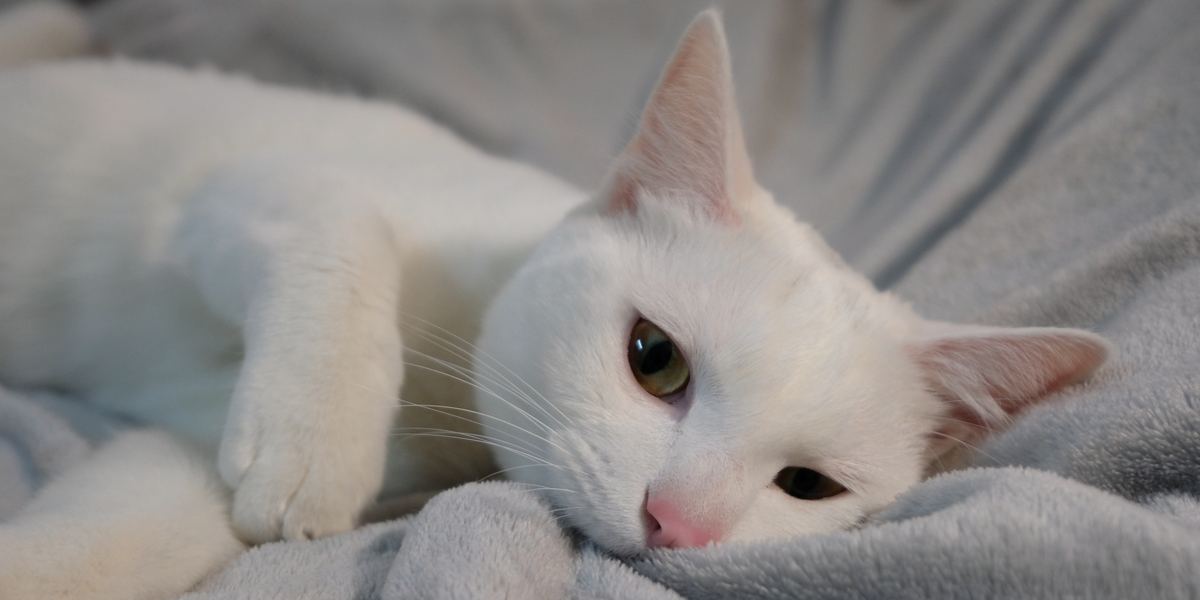
Many cat owners will be well used to some strange behaviors from their feline friends—cats are known for being mysterious and act in very different ways to us mere humans.
However, if you’ve noticed your cat rhythmically pawing at a soft surface, such as a favorite blanket or one of your best sweaters, you may be wondering what on earth they’re doing. They may be purring, biting, or even drooling at the same time.
Well, kneading behavior is actually perfectly normal for cats. It is thought to be a nursing instinct left over from kittenhood, although there are a few other theories that we will investigate below. Read on to find out more!
What Is Kneading?
Kneading behavior is the rhythmic pawing motion that some cats make: they alternate pushing each forelimb paw into something soft, such as a blanket, or even their owners’ legs! Many cats will bite at the blanket whilst kneading, others will purr or drool.
Cats often enter a very drowsy state whilst kneading. The motion is called “making biscuits” by some cat owners, as the movement looks similar to a baker preparing dough.
Why Does My Cat Knead And Bite Blankets?
There are a few common reasons for kneading and biting. Understanding this common behavior is key if we want to make any changes to our cat’s actions without causing any anxiety or stress.
Nursing Instinct
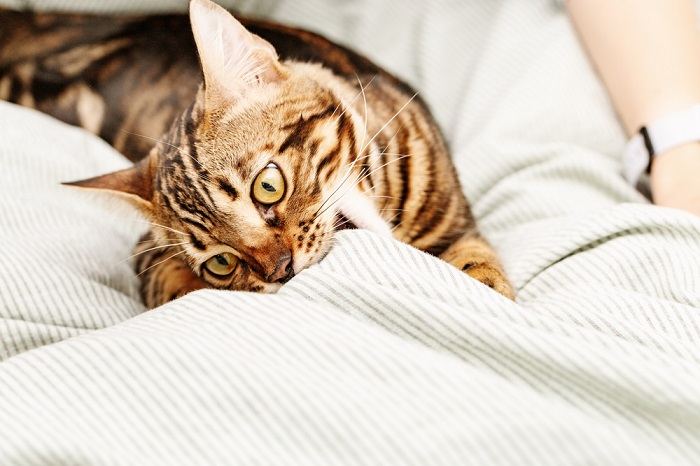
Kneading and biting blankets is a behavior that is tied to early kittenhood.
Newly born kittens are highly dependent on their mother for nutrition as they exist solely on milk for the first few weeks. Kittens are often observed to knead and bite at their mother’s nipples, which is thought to stimulate milk production.
This is an instinctive behavior – no one teaches the kittens to do this, just as they do not need to be taught suckling. It is a perfectly natural and normal behavior.
You may well ask, but why do adult cats knead? Surely once they and their littermates are past weaning, they no longer need to stimulate milk production?
This is perfectly true, but it is thought that kneading and biting onto a soft surface is a relaxing and soothing behavior for cats. They no longer require milk, but the motions remind them of comfort, safety, and warmth.
This is also why some cats drool while kneading—their salivary glands are anticipating milk. Kneading and biting are common behaviors in adult cats—both male cats and female cats— and does not appear to be associated with early weaning or abrupt separation from the mother cat. It has also been seen in bottle-fed kittens, showing that is a true instinctual behavior.
Cats are most likely to perform kneading behavior when they are feeling secure and comforted, so if your feline friend likes to knead and bite at that soft blanket on your lap, it’s actually a compliment! The kneading motion is a comforting reminder of kittenhood, but the action also releases “happy” pheromones from the scent glands in their feet, so they feel super relaxed.
Bed Making
There is a theory that the ancestors of our domestic cats used kneading as a way to make a sleeping spot for themselves in the long grasses of their African savannah homeland. This would explain why cats often get sleepy while kneading.
However, most cats seem to lie in one place to knead rather than knead around an area, and it seems more likely that it is a behavior linked to pleasure and comfort than necessity.
Playing
The rhythmic motion of kneading is quite distinct, but it can be confused with another common feline behavior where they grab at something with their forelimbs and then bite at it. This is more a play behavior, mimicking their hunting instincts.
If you notice your cat biting at inappropriate things, or even at you when you’re just trying to have a cuddle, make sure they have plenty of cat toys and lots of active stimulation throughout the day.
Also Read: Why Do Cats Suckle? Top 6 Causes of Suckling in Cats
Kneading And Biting Hurt! How Do I Stop My Cat?

If you don’t enjoy your cat kneading in your lap, try to encourage the kneading elsewhere.
Kneading and biting are both perfectly natural cat behaviors. However, we get it—it hurts! If your cat uses you as their target for sharp kneading claws and pointy nibbling teeth, you may want some pointers on how to direct these behaviors onto something more suitable.
If your cat kneads and bites at you as they sit on your lap, try lessening the impact by placing a thick blanket between you and your cat. Cats generally love soft things, so they should be pleased with this development. It’s a win-win: they still get to knead and bite, and you get the cuddles and bonding without the pain!
You can try and redirect your cat’s love to something away from you—a special blanket in their bed or even one of your sweaters or something that smells like you. Pheromone sprays can help attract cats to whichever replacement you choose.
If your cat kneads or bites you and you wish them to stop, don’t shout or scare them, as this will only induce stress. Gently remove them to an alternative place, or distract them with food or cat toys. Cats learn quickly and should soon recognize that this behavior is unwelcome to you.
Conclusion
Kneading and biting at blankets or similar are normal cat behaviors, thought to mimic the action of a kitten toward a mother cat as they nurse for milk. Adult cats do not need to perform these actions, but often do as a form of bonding and comfort.
They often prefer soft textures such as blankets or clothing. If your cat is directing these behaviors toward you, their owner, it is actually a compliment, but you may wish to gently redirect them toward something more suitable if it is causing you discomfort.
Frequently Asked Questions
Should you let your cat knead you?
Cats love to knead, and it is an ingrained and instinctive behavior. It is also a compliment: cats knead when they are feeling loved, safe, and warm. However, kneading can be painful to the recipient and there are ways to gently redirect your cat to knead elsewhere.
Why do cats knead a blanket?
Kneading is an instinctive feline behavior, left over from when, as a kitten, your cat would knead at its mother to stimulate milk production. Even as adults, cats like to knead on something soft and warm to provide comfort and pleasure.
Do cats knead to show affection?
Cats knead their mothers when they are kittens, and as they progress to adulthood many cats will still show kneading behavior. It is thought that cats knead when they feel happy and safe, which is why many cats knead their owner’s legs as they cuddle on a lap. It is a sign that they are happy and bonded to you.
Why does my cat stare at me when kneading?
Cats knead as a sign of contentment and pleasure. They also use eye contact as communication: a sleepy stare with slow blinks is a sign of love and affection. If your cat is staring and kneading, they are giving you strong signals that they are feeling happy and loving!


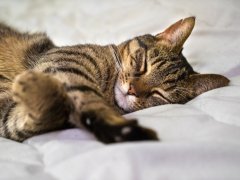
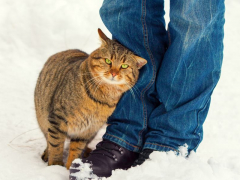


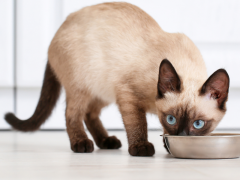

My cat has a ferious kneeding habit on my cloths. I think the world of this cat. But she is damaging my clothing. On top of the pain it causes. Any suggestions?
I’d recommend trimming her nails. That should help to reduce the amount of damage she can do to your clothes. You can learn more about how to do this here.